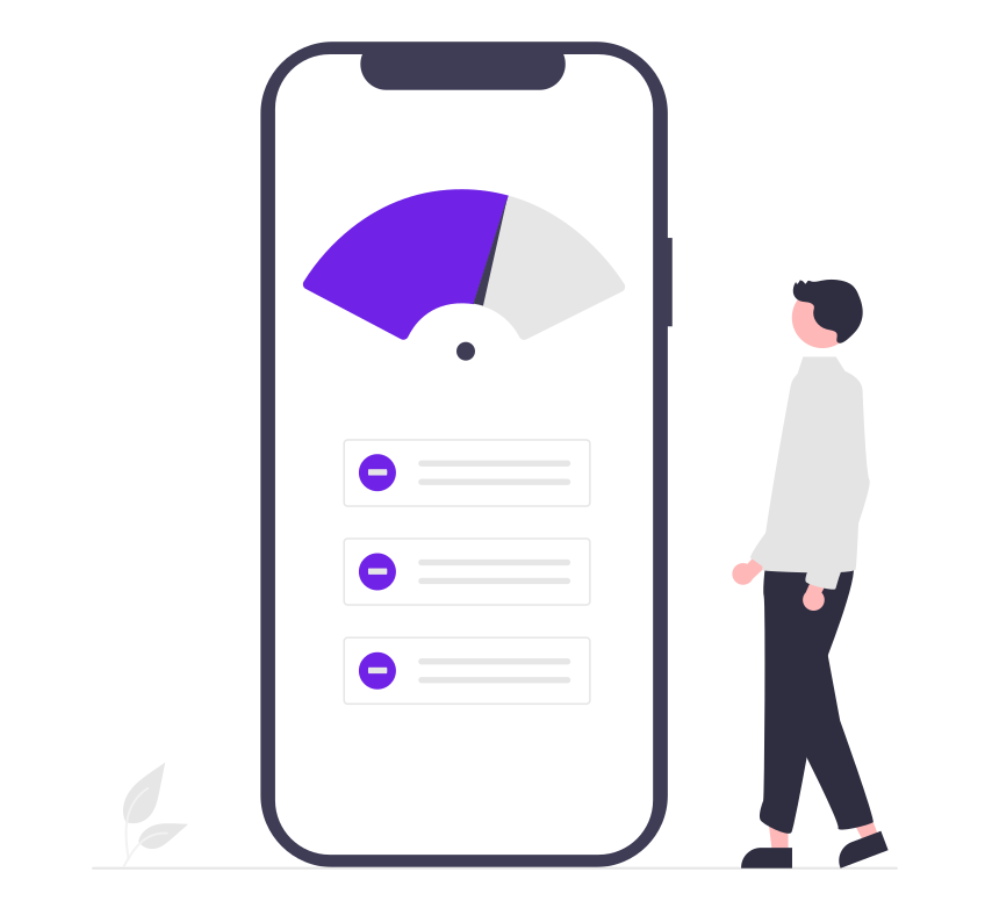A website with a great user experience (UX) is like a physical store with great customer service.
A salesperson in a physical store tries to determine what is important to the customer so that they can provide the right product at the right time.
The same idea applies to your website. In essence, conversion rate optimization (CRO) ensures that your website or page provides visitors with the right content at the right time.
Although it may be tempting to think about a website in terms of Google search rankings and other technical aspects, it is important to remember that web visitors are humans, so websites should prioritise people over algorithms.
We’re not saying you should ignore SEO ranking, just that it’s better to have slightly less visitors and retain them, than lots of visitors who hate your website and immediately leave!
By following these steps, you increase your chances of making your potential visitors comfortable enough to follow through with their buyer’s journey.
1. Speed Up Your Website!
Page load times and UX are linked. No matter how good your page design and content are, if you cannot display your pages almost immediately, you’ll certainly lose customers.
In addition, 45.4% of potential visitors are less likely make a purchase if a website has slow page load times.
So, you need to keep a close eye on your page load times using website tools such as GTmetrix or Google PageSpeed tools. These tools will help you evaluate the speed performance of your site and identify its main problems. In particular, GTMetrix provides specific recommendations on how to improve your site’s performance rating.
Therefore, when it comes to UX improvements, you should always start by keeping your site as fast as possible.
2. Have a Strong Social Presence
Integrating a social media strategy is another way to improve UX.
These days, consumers expect businesses to be established on social platforms and to engage with them regularly.
Carefully mapping a UX that includes social media shows that businesses have taken a thorough look at consumer’s buyer’s journey.
To successfully implement your social media strategy, focus on engaging, educating, and building support for your brand, rather than publishing random content.

To start, you should add social links to your website. Ideally, using the most popular social platforms.
Platforms like Facebook, YouTube, Instagram, LinkedIn and Twitter will help you find and reach your target audience.
3. Create Thrilling Calls to Action
Customers browse your website by following the visual signals that move them between important content.
Call-to-action phrases (CTAs) use active words and bold buttons to allow users to navigate your site and direct them to the next step.
You should think about the effect of colour on user psychology when creating a CTA button.
Applying various hues, also known as colour psychology, will evoke varied impressions and results from web visitors. Choosing the right colour for CTA buttons can help the UX in increasing conversion rates.
CTA button words should also be deeply thought about. The use of active verbs enables action so that the visitor can see the benefits of their conversion.
The more practical, emotional, and time-sensitive the CTA is, the higher the conversion rate will be.
4. Eliminate Any Broken Links (404s)
Broken links can be an added frustration to your site visitors. However, your site visitors may not pay much attention when they first notice a broken link on your website. But if you have many more hidden inside, your site will soon start to lose credibility.
Google doesn’t punish site owners for having some broken links, but most of their users do.
The best tool to use would be Google Analytics as it’s a powerful free tool that you can use to remove broken links.
It generates custom reports to help you find broken links. This will allow you to do further work to clean up the problem and get rid of it for good!
5. Write Creative Headlines!
Your headline and content should be driven by what your prospects are looking for. Including keywords in the headline is very important to attract and target the right customers. In addition to improving UX, using the right headline will also influence your Search Engine Optimization (SEO) rankings.
This is because search engines like Google and others generally value headlines over other content, so choosing the right headline and keywords to stand out can significantly improve search performance.
But more importantly, headlines guide users throughout the site and speaks directly to them, making it easier for them to search and find the content they want.
Improve Your Website’s User Experience
By following these 5 steps, you will improve the user experience of your website. A reliable user experience can not only drive-up traffic but can also help retain old customers and decrease your website’s bounce rates.
If you want a company that incorporates the best UX practices and can help you implement unique CTAs and fix any broken links, check out our services here!
